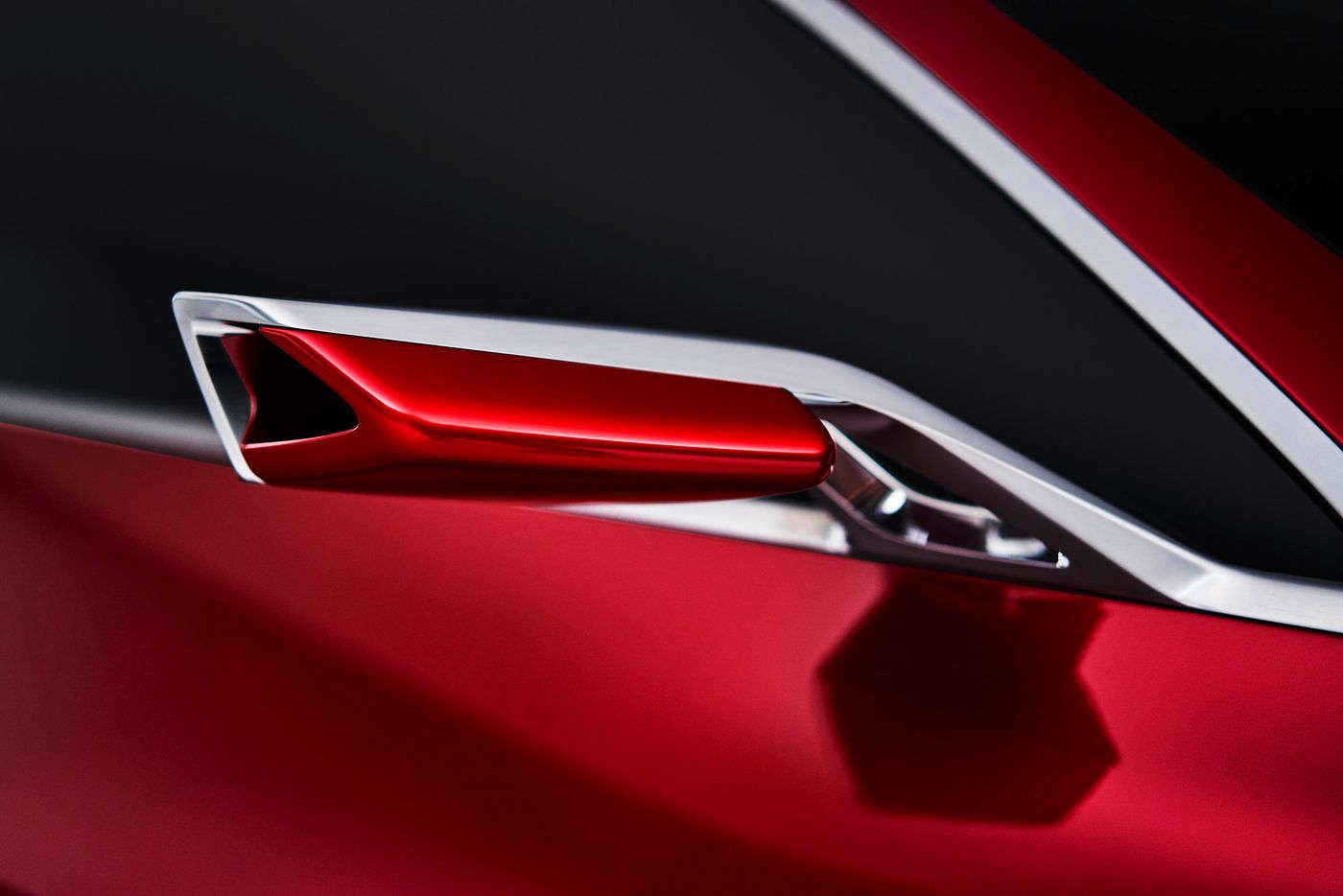
A Conversation about Colour with Annette Baumeister, Member of BMW Group Design
Words by Yatzer
Location
A Conversation about Colour with Annette Baumeister, Member of BMW Group Design
Words by Yatzer
Asked how important colour is to a car, Annette Baumeister, Head of BMW Colour and Trim, smiles. “When I joined BMW [as a designer for exterior colours] I thought I had the most important job in the company!” she says in a recent chat with Yatzer. Of course, since then, her views have evolved; while she still believes that colour is a very important part of automotive design of course, it can’t be considered in isolation, she says. Colour is inextricably linked with a car’s geometry and materials, you can’t think of one without the other. More than just a way to customize a car, she explains, colour can shape its geometry, modernize its looks and emphasize its character. With a career at BMW spanning 23 years, Annette certainly knows what she’s talking about, which made our conversation as insightful as it was colourful.
With a background in textiles, Annette explains her involvement with cars: “It was never my plan, it didn´t look so attractive for a textile designer to join the automotive industry”, especially in the mid-1990s when she joined BMW just a year out of university. It was actually one of her professors who recommended her for an interview with the Munich-based company, which opened her eyes to the automotive industry’s potential for working with colour and materials, as well as BMW’s creative universe and diverse workforce.
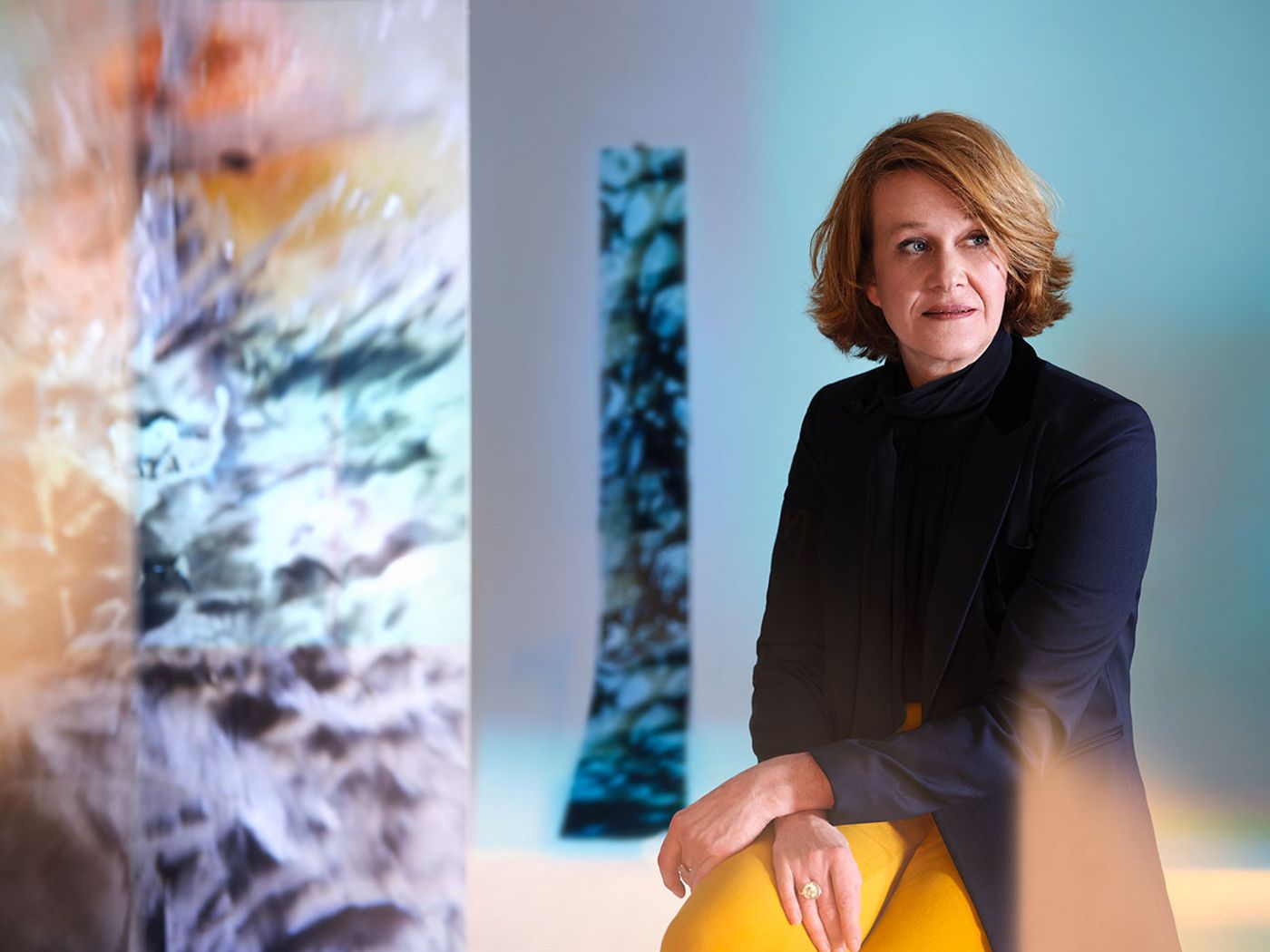
These unexpected pictures of Annette Baumeister represent her and showcase personal objects like processed fabrics, exceptional ceramics, wood prints, iridescent shells and marbled stones, which are important sources of inspiration for her work. She immerses herself in her very personal worlds of color and material in the resulting motifs. The picture series was created in collaboration with the Munich based photographer Sacha Tassilo Höchstetter.
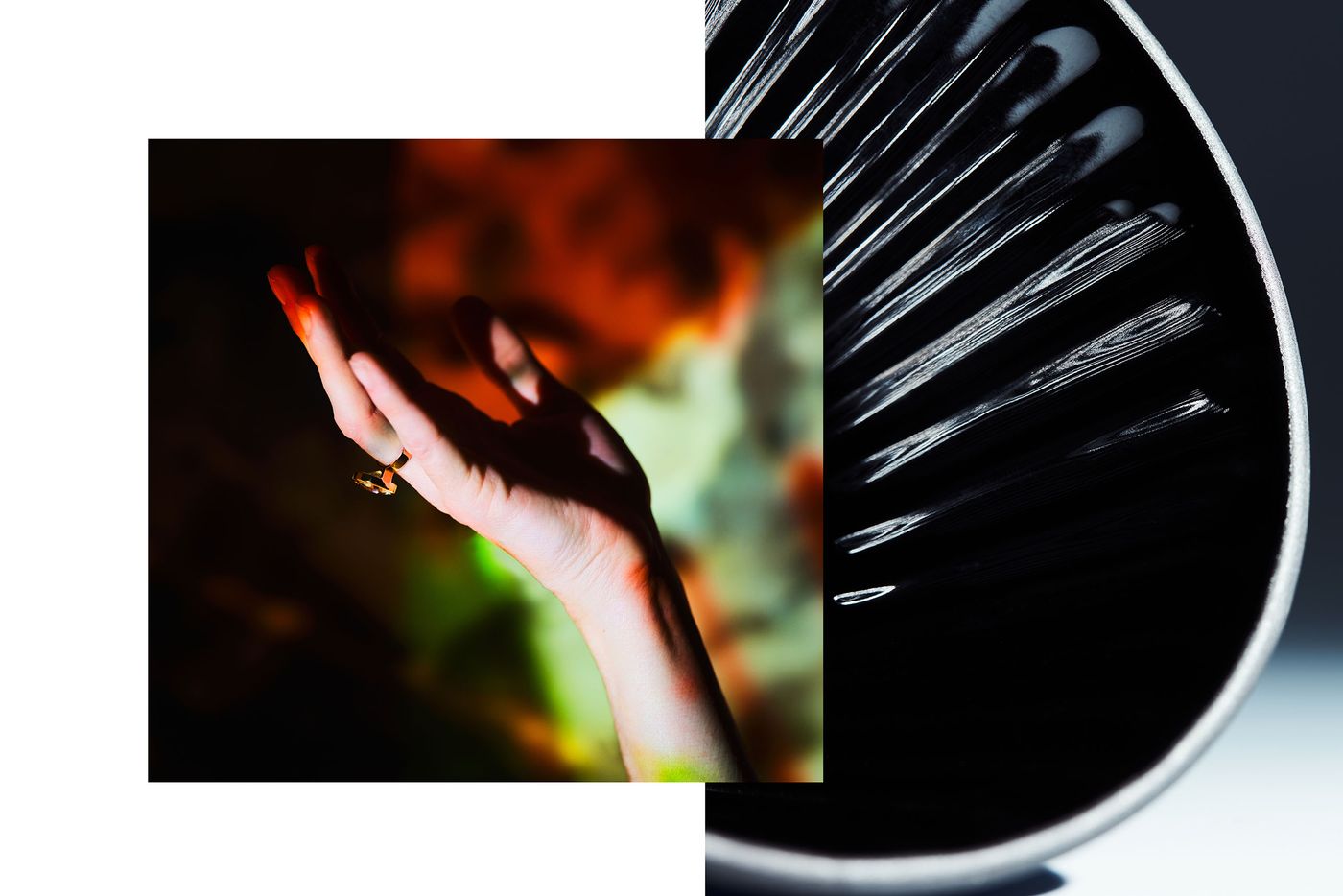
These unexpected pictures of Annette Baumeister represent her and showcase personal objects like processed fabrics, exceptional ceramics, wood prints, iridescent shells and marbled stones, which are important sources of inspiration for her work. She immerses herself in her very personal worlds of color and material in the resulting motifs. The picture series was created in collaboration with the Munich based photographer Sacha Tassilo Höchstetter.

BMW Concept 4. Courtesy BMW Group. Photo by Ralph Mecke.
BMW Concept 4 – The Making of “Forbidden Red” Colour.
Annette started at BMW as a designer for exterior colours, which she confesses remains her secret passion, before honing her skills on textile and colour concepts for the interior, going on to work for various fields and brands, including a three-year stint as Studio Director for Designworks's Shanghai office, BMW’s design innovation studio with additional premises in Los Angeles and Munich. While the diversity of projects and challenges made Annette stay put, the freedom BMW gives her to experiment is just as important. “I was never told don’t do this or don’t try that”, she explains.
One of the most exciting and prolific parts of Annette’s tenure at BMW has been the creation of new colours. Inspiration can come from anywhere she tells us: “Your immediate surroundings, a trip, nature or fashion”, even from the car’s leather interiors. Coming up with an idea for a new colour is the easy part, translating it into an actual paint is much trickier as it involves chemistry and technology – terms such as “pigments” and “effects” come into our conversation at this point.
Working closely with specialized suppliers, an insightful experience she loves, you set about creating the desired colour though a mixing process which Annette compares to cooking. It’s all about the proportions of the ingredients, she explains, “a tiny bit of this or that can make a big difference”. Small samples are created, feedback is given, more samples are produced, and so on, until at one point a large scale sample is produced, ideally modelled on the actual car, where the paint can be properly assessed, not just by Annette’s team but also by her design, product and marketing colleagues as well as BMW’s technicians who will be painting the cars. If it’s not exactly right, it’s back to the paint lab. “It’s a very exciting process”, because when it all comes together you don’t just have a new colour but a brand new car.
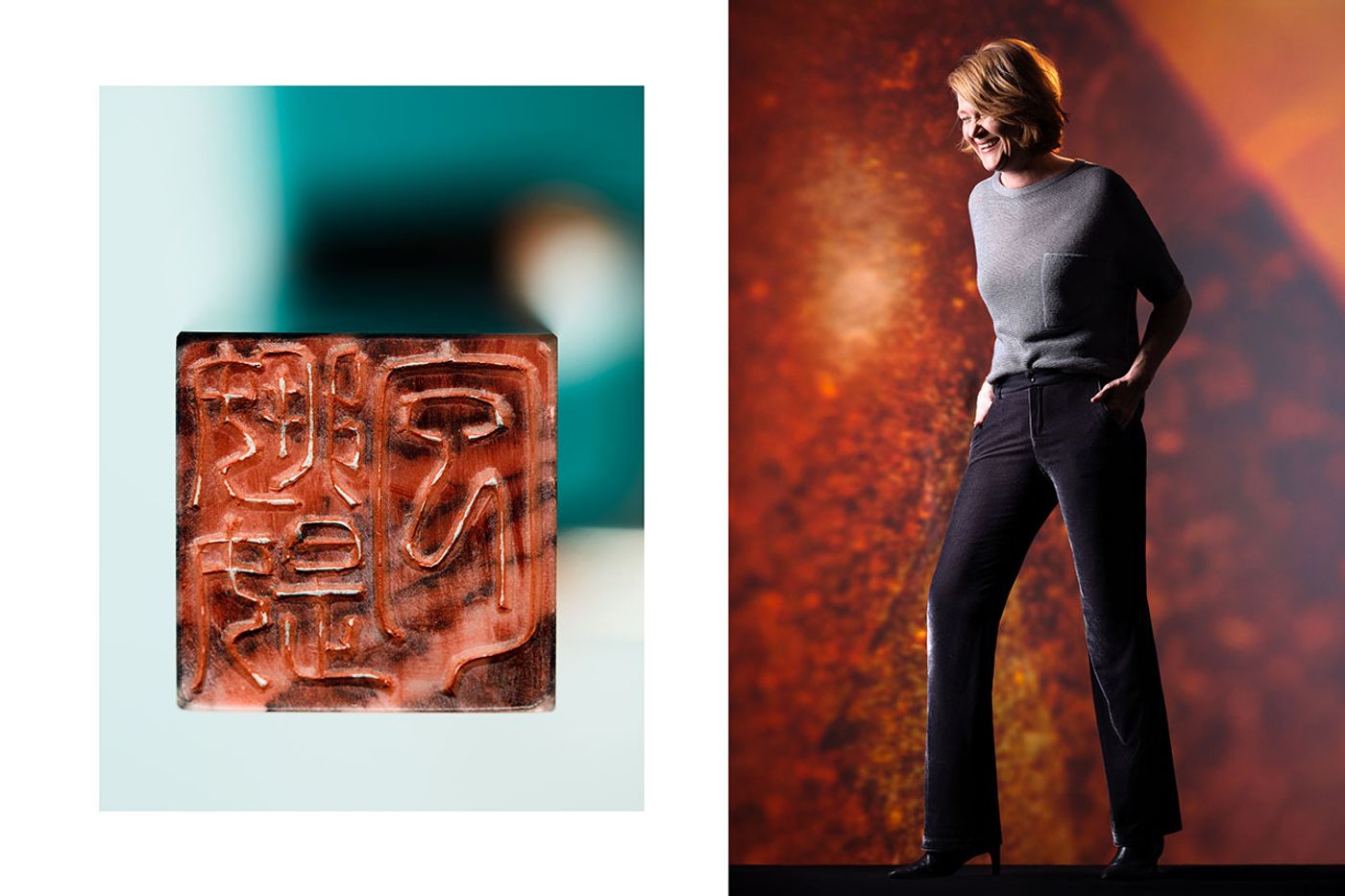
These unexpected pictures of Annette Baumeister represent her and showcase personal objects like processed fabrics, exceptional ceramics, wood prints, iridescent shells and marbled stones, which are important sources of inspiration for her work. She immerses herself in her very personal worlds of color and material in the resulting motifs. The picture series was created in collaboration with the Munich based photographer Sacha Tassilo Höchstetter.

These unexpected pictures of Annette Baumeister represent her and showcase personal objects like processed fabrics, exceptional ceramics, wood prints, iridescent shells and marbled stones, which are important sources of inspiration for her work. She immerses herself in her very personal worlds of color and material in the resulting motifs. The picture series was created in collaboration with the Munich based photographer Sacha Tassilo Höchstetter.
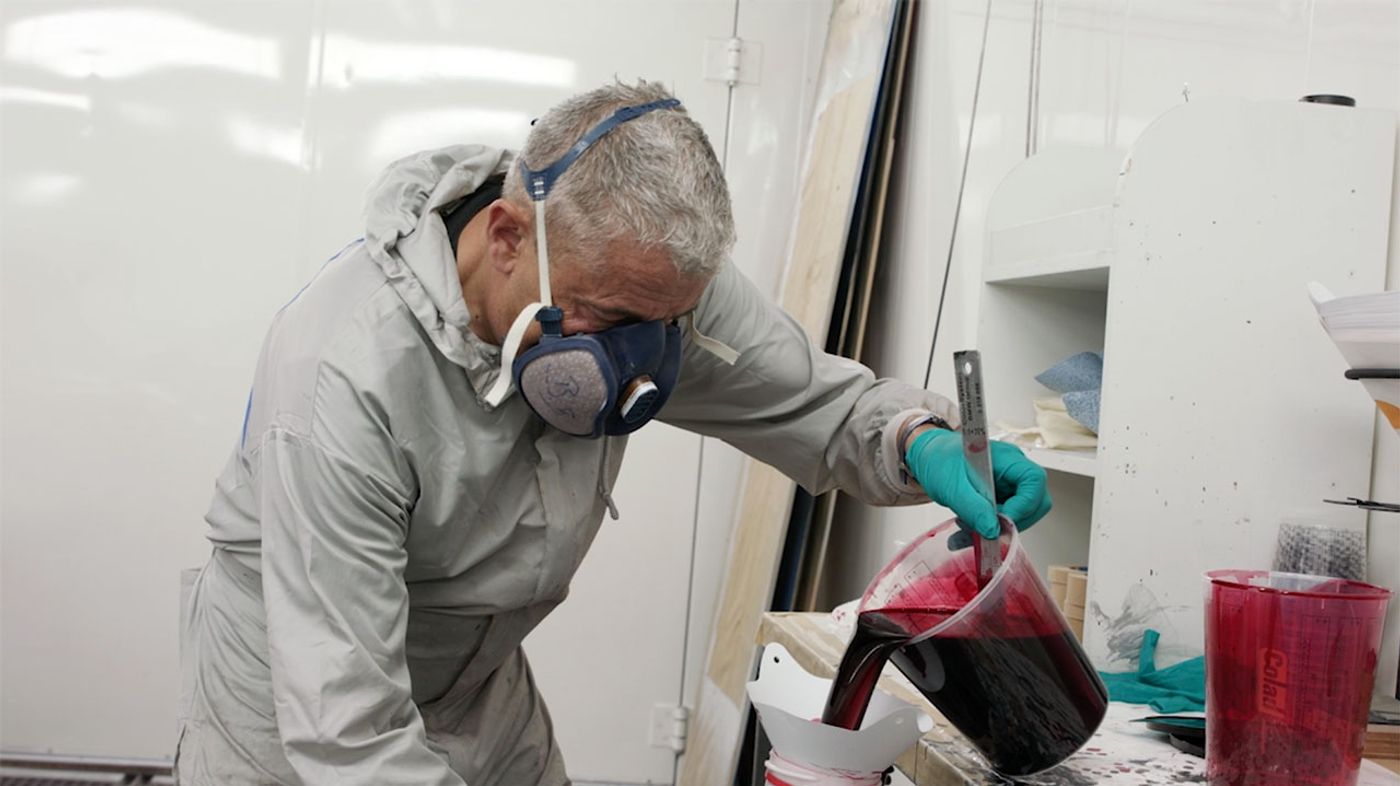
The Making of "Forbidden Red". Video Screen Shot. Courtesy BMW Group.

The Making of "Forbidden Red". Video Screen Shot. Courtesy BMW Group.
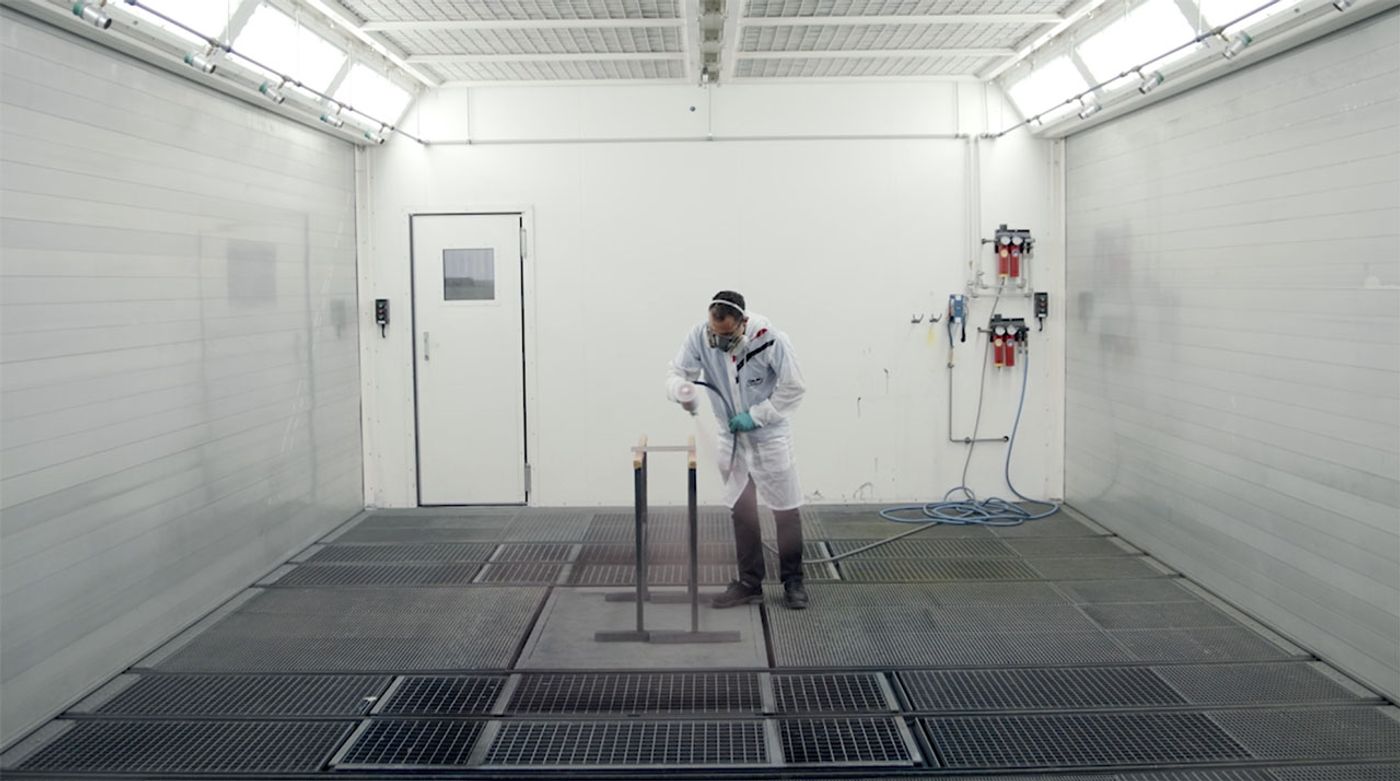
The Making of "Forbidden Red". Video Screen Shot. Courtesy BMW Group.
Although she prefers to create colours for production cars – it’s more of a challenge she claims – when it comes to pushing the boundaries, show cars are a designer’s dream. Take for example ‘Forbidden Red’, the gleaming, candy-apple-like hue created for the BMW Concept 4 coupe unveiled last year at the International Motor Show 2019 in Frankfurt. “It took us ages to get this effect”, Annette explains, “It’s not the paint itself but the painting process that makes this colour so unique”. Featuring eight layers of paint (normally there are only two!) including gold pigments, a black undercoat and clear coats on top, it has a particular density and depth, shifting from glossy red under bright lights, to deep crimson, to almost black in the shade, which perfectly exalts the car’s geometry. Developed in-house, through a very hands-on approach, this exceptional colour encapsulates both the creative sensibility of Annette’s team and the powerful role of colour in automotive design.
Another exciting milestone Annette mentions is the creation of matt paint at BMW during her time as Head of Colour and Trim Design and Design Quality at MINI. Considered a no-go in the industry due to its propensity to become glossy when washed, it was nevertheless the holy grail of visionary car designers at the time so taking up this challenge was both daring and brave. It also took years in its development. Matt colours have been in production for several years now proving that even the most strident quality requirements – “a car paint has to be stable for twenty years”, she points out – need not constraint creativity and innovation. In fact, Annette believes it’s imperative for a designer to know the development process and technical parameters in order to convey his or her idea to the people who are tasked with making it a reality. “If you only have a vision but no idea of what you’re talking about”, she adds, “it doesn’t get you anywhere”.
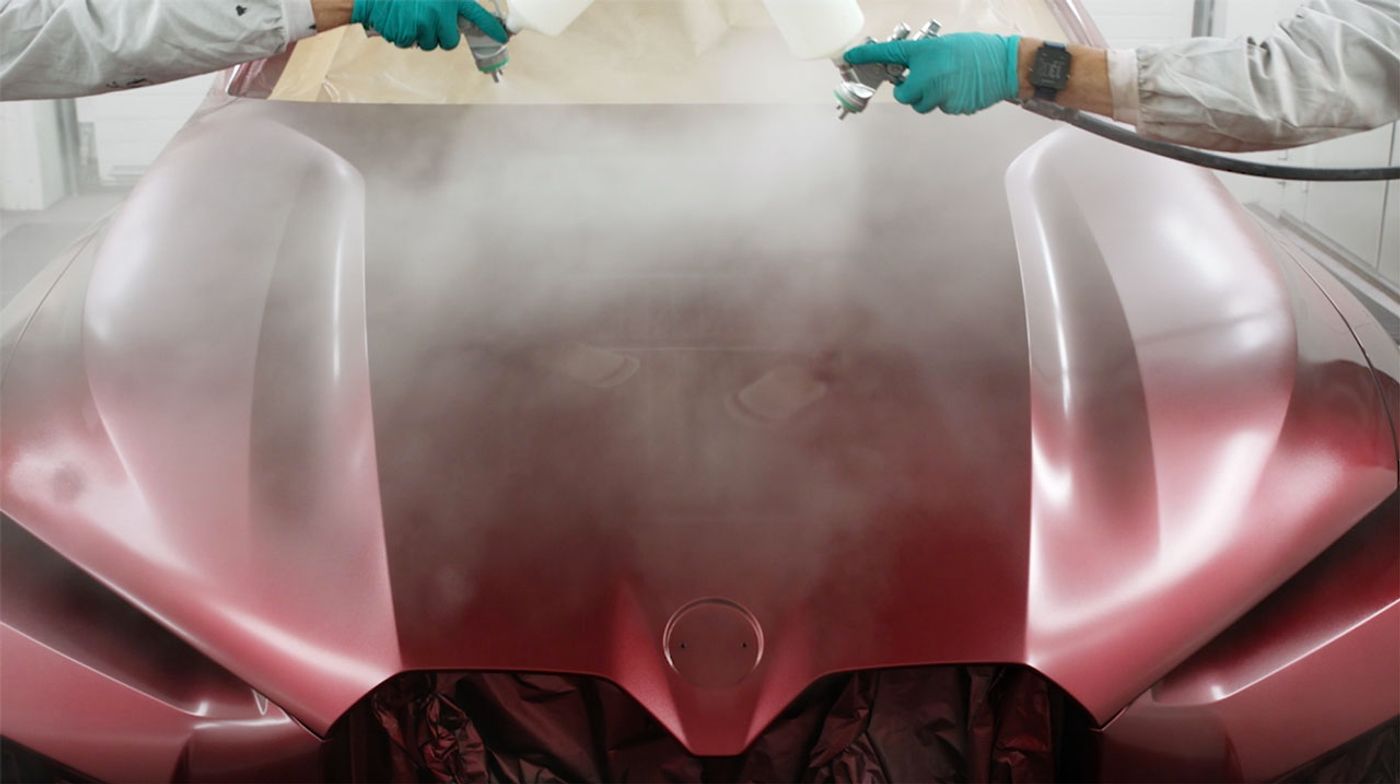
The Making of "Forbidden Red". Video Screen Shot. Courtesy BMW Group.
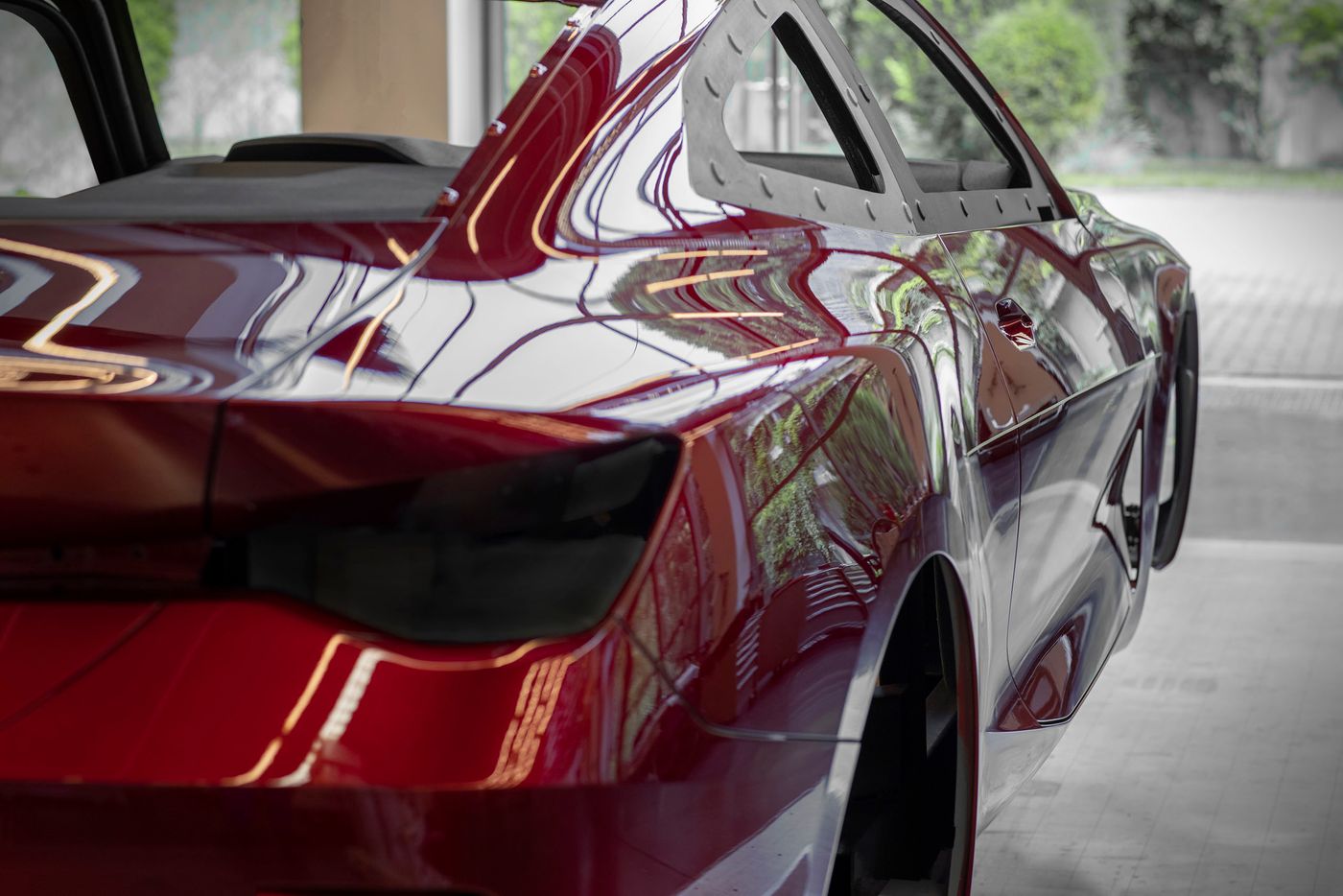
Courtesy BMW Group.
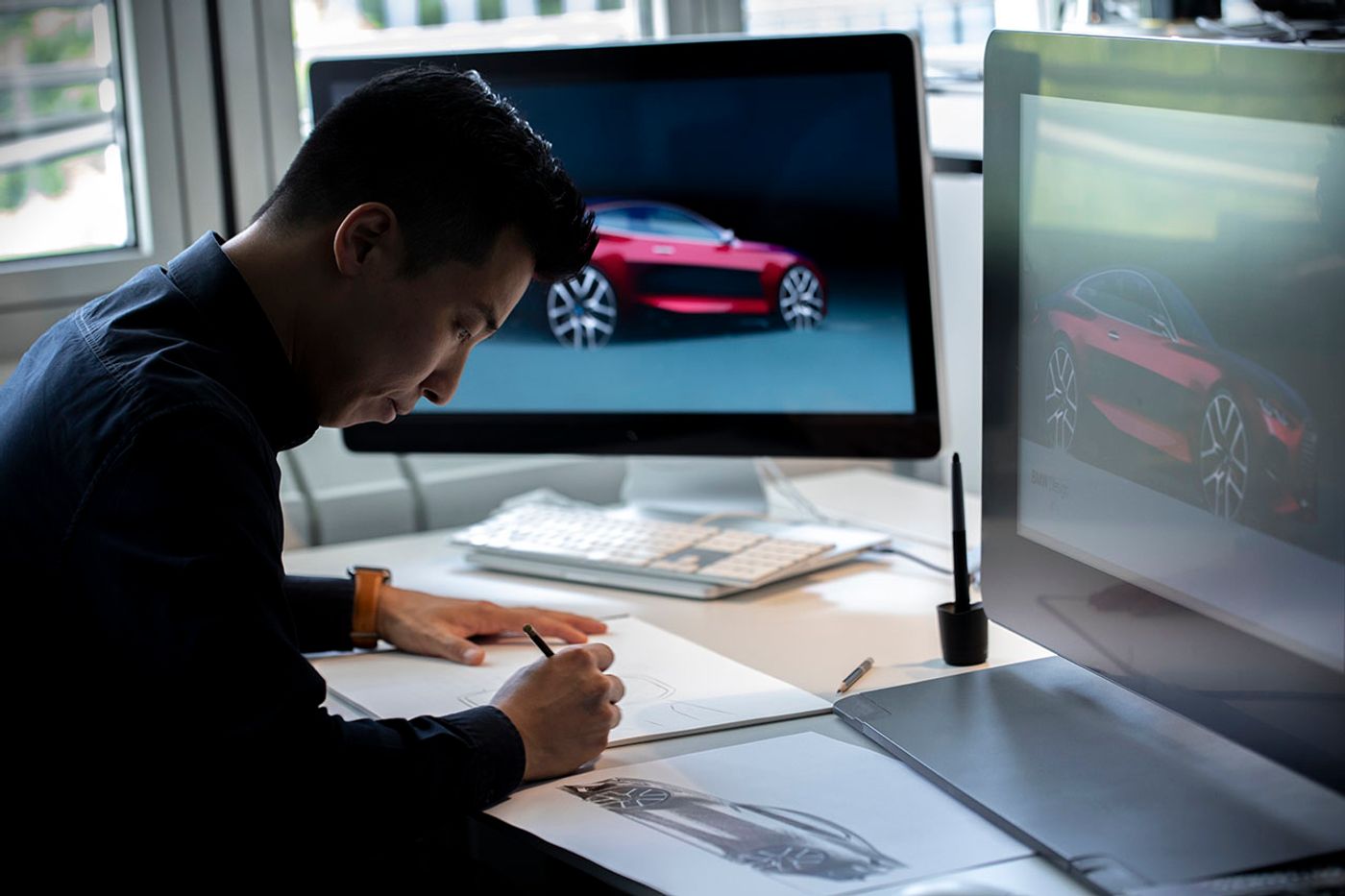
Courtesy BMW Group.
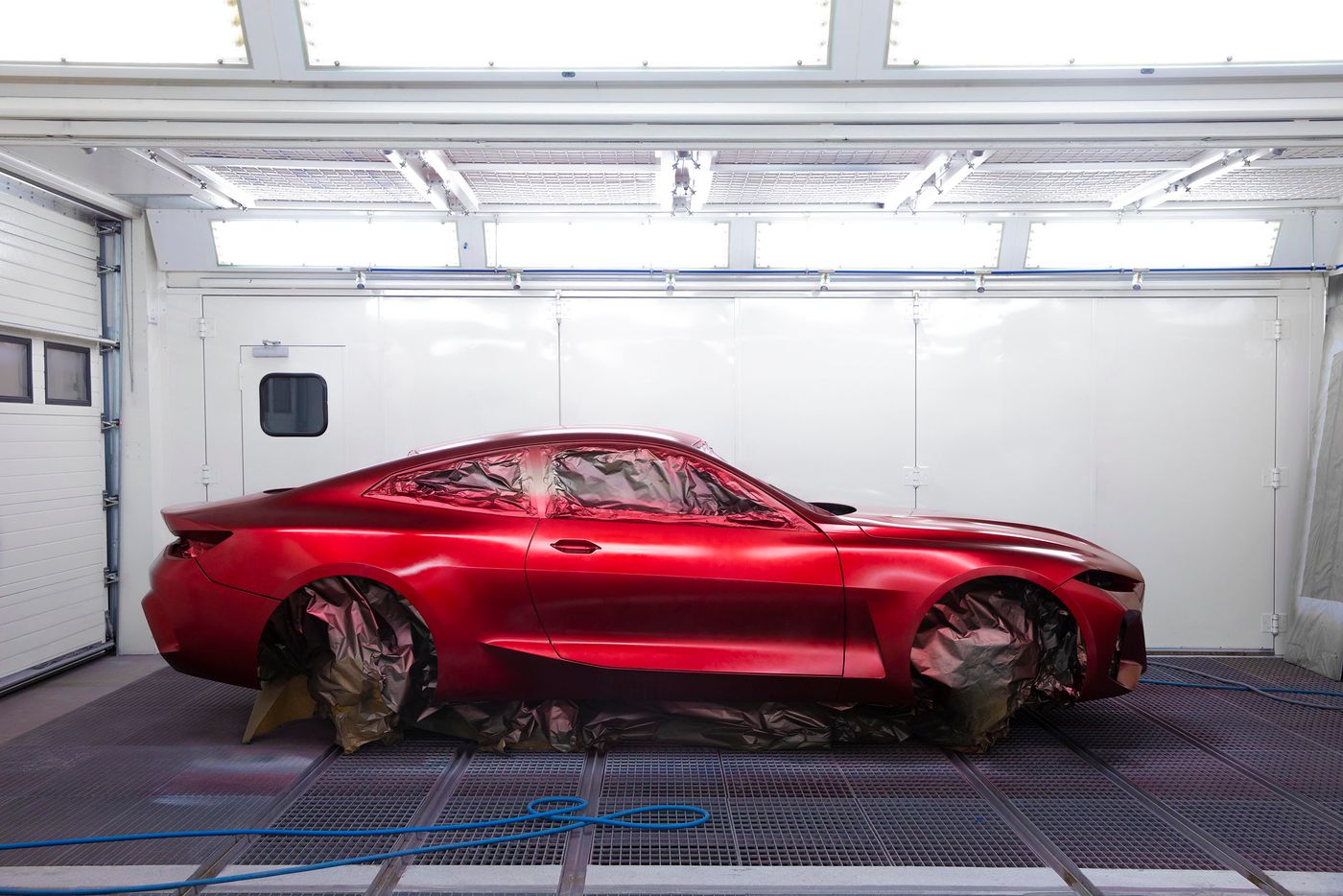
BMW Concept 4. Courtesy BMW Group.
Since joining BMW in the 1990s, Annette has seen her fair share of trends when it comes to colour in the car industry. “At the moment there are a lot of solid greys and ‘effect’ colours”, she says, but the difference with fashion and interior design is that it takes longer for automotive designers to react, much longer in fact: colours are decided upon two-three years in advance of a car’s launch. So it’s important to know what’s going on in terms of technology, and have an overview of what’s trending, but you also have to have a feeling of what’s going to be trending in the future – no mean feat if you consider that you also have to take into consideration market expectations and competitor differentiation.
Asked to name her favourite car colour Annette pauses. “There are colours I would never choose on a car but don’t ask which ones”, she merrily says, adding, “I really like dark colours”. At the moment she’s into ‘effect’ colours, which, as she explains, “look fairly solid but have a two-colours-in-one effect”. It’s no surprise then that BMW’s portfolio currently features quite a few of them, namely grey tones that on closer inspection aren’t really grey but have a tendency to turn green, brown or copper.
The nuanced combination of dark, overlapping colours in the same paint is exactly what Annette likes about them and is what makes them modern and unexpected in her opinion. It’s also the reason why she loves black and blue together – and not just in her designs, her wardrobe also abides to a similar palette. But what’s really interesting about the two-colours-in-one effect is that it can only be achieved in three dimensions because it needs to catch the light from different angles, which brings us back to the start of our conversation. You have to think of colour in relation to geometry, their interrelationship is what makes a car come alive, not to mention what makes Annette’s work at BMW so creatively challenging. We can’t wait to see what she’ll come up with next.
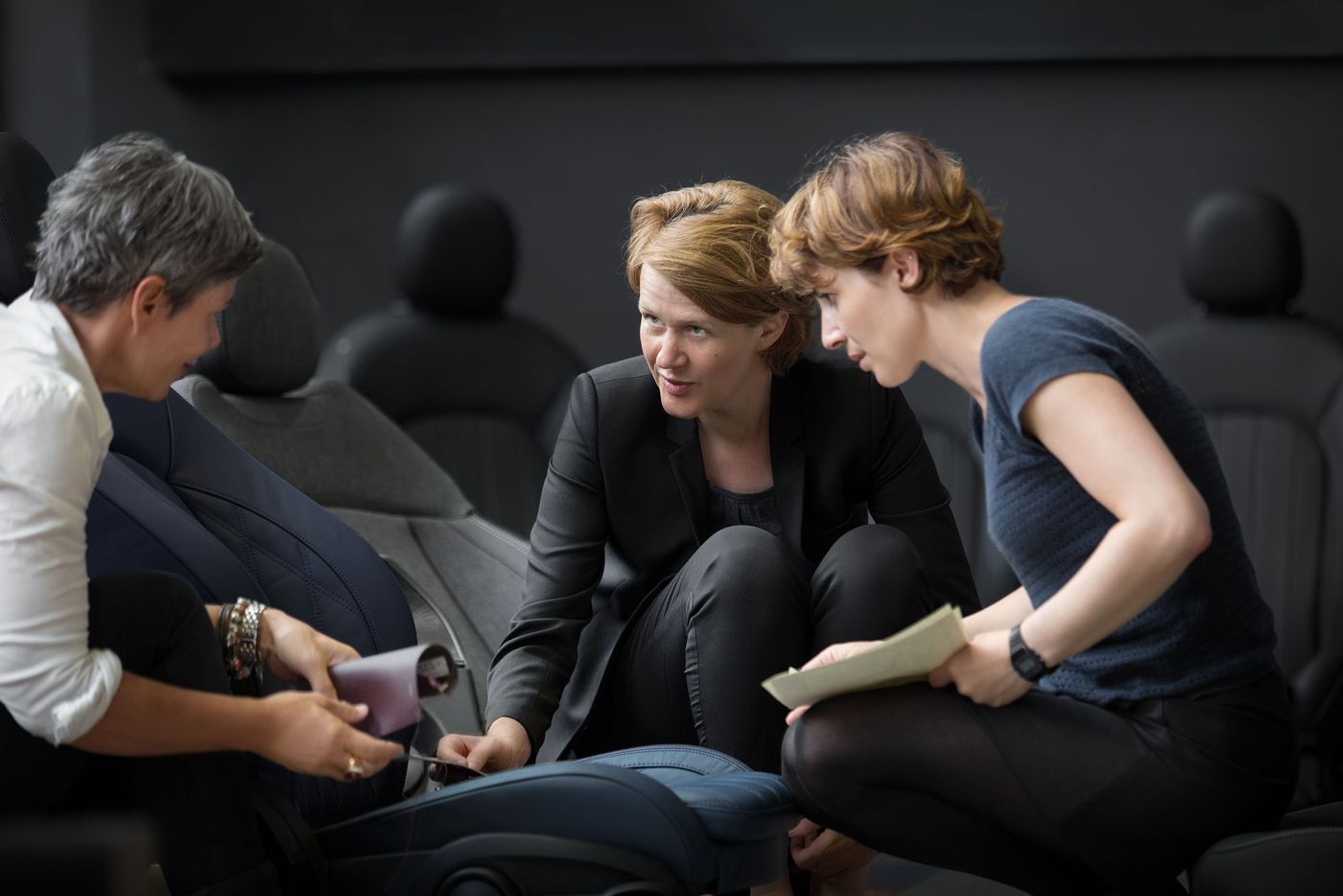
Ute Wellershaus and Wesselka Mandowa selecting a new leather color together with Annette Baumeister. Courtesy of BMW Group.
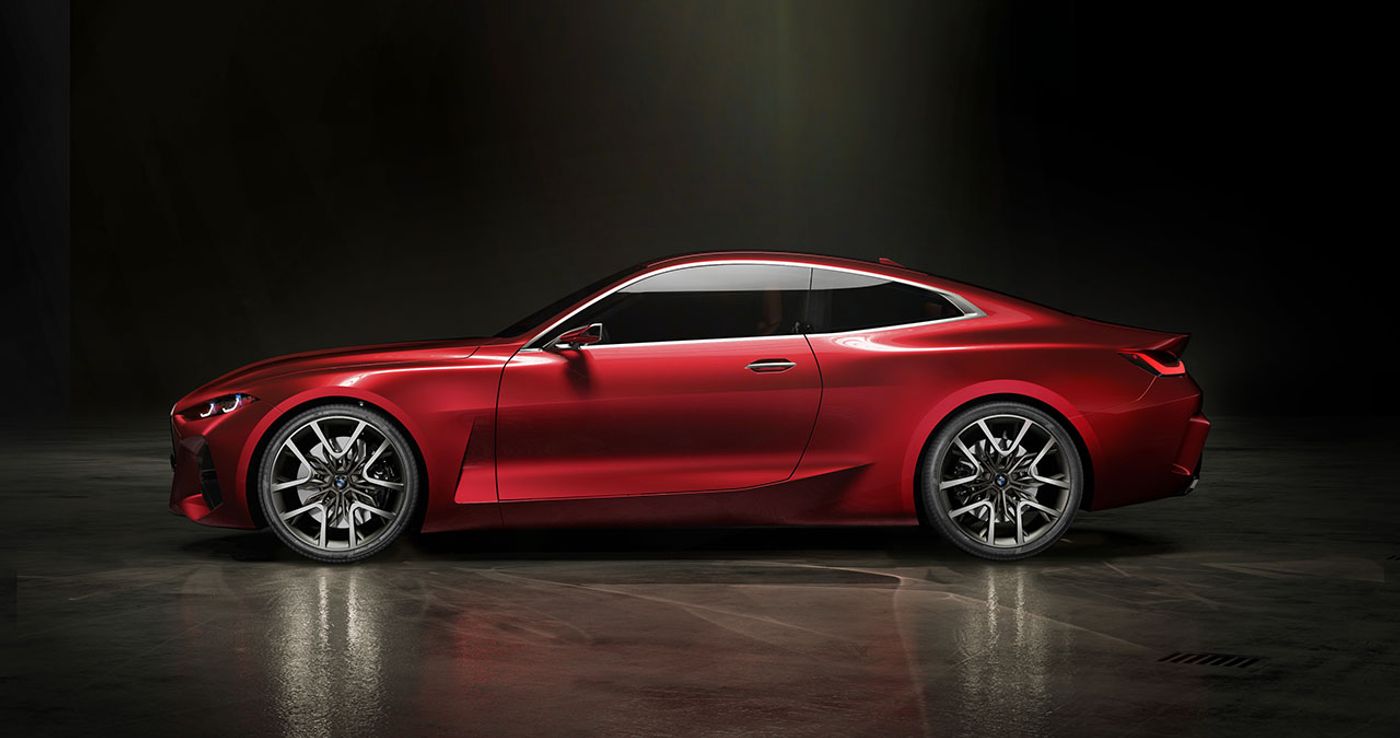
BMW Concept 4. Courtesy BMW Group.